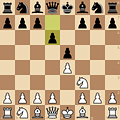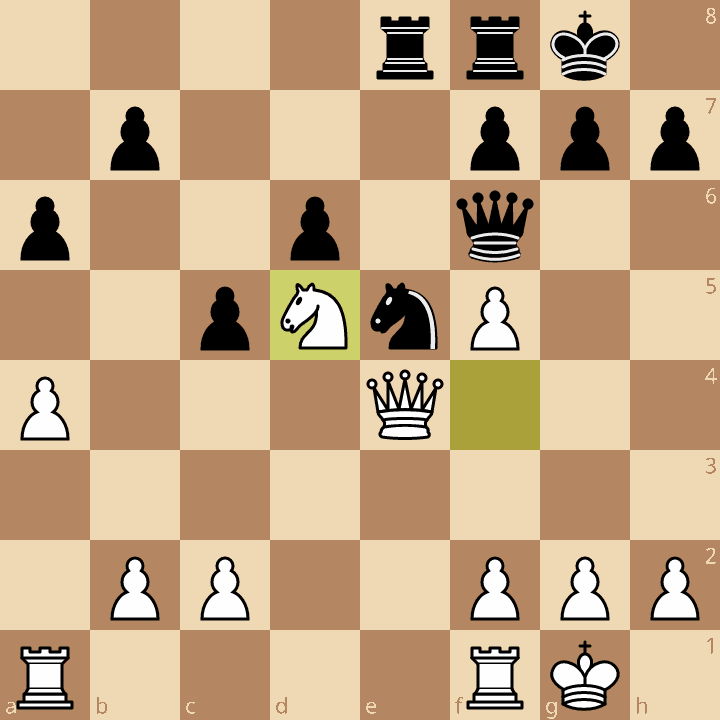Rapid Game Recap: White vs the Philidor Defense
Trying to rebuild my daily rapid game habit after a long hiatus
Time Control: 15 minutes + 10 second increment per move.
White: Me (2067 lichess)
Black: 2018 lichess
My first foray into the Lichess Rapid pool after a while. Earlier this year I jumped up to 2151 at my peak, then came crashing down a few weeks later, and didn’t touch it for months. Not necessarily rating aversion as much a busy tournament schedule + wanting to play video games or watch TV at night. I would like to get back in the habit of playing Rapid games for training purposes.
I got matched with a player I’ve played four times before. My record is a dismal 1-3 in their favor. Both our ratings have decreased since the last time we played, but theirs dropped further. Just an interesting note.
The Opening
1.e4 e5 2.Nf3 d6
The Philidor Defense. A year ago, I haughtily mocked everyone who would play this dumb pawn move on the second turn. Nowadays I understand the appeal of playing positions like this where you’ve reserved central tension for later. The Philidor is a classical defense, but I didn’t gain appreciation until studying Richard Reti’s games and ideas. Reti wasn’t known for playing the Philidor Defense, but I learned a lot about the “hypermodern paradox”: after holding back from occupying the center in the opening, you do so in the middlegame or endgame after destroying the opponent’s center. While this is referred to as the “hypermodern paradox”, it’s still somewhat applicable to defenses where Black accepts a cramped position in order to later attack the center when White’s caught with his pants down. I don’t know if I’ll ever play this opening myself, but I respect it a lot more now.
3.d4 exd4 4.Nxd4 Nf6 5.Nc3 Be7 6.Bf4
This is a move I made from memory, but at this point I’m out of book. The plan in positions like this is often Qd2, h4 (even sacrificing it to open the h-file), f3, g4 etc. Basically go for a “150 Attack” sort of thing.
6…a6?!
This seemed like a slight move order inaccuracy, but also like it could simply be an attempt to push b7-b5-b4 (typical in Philidor and Pirc defense games) to displace my c3-Knight and capture the pawn on e4. So, I played a move that I learned from the Italian and Ruy Lopez.
7.a4?!
This move is probably too prophylactic, but I didn’t want to deal with any play on the queenside. It does also allow me, in some cases, to push a5 to shut the queenside down even more. Probably I was fine with 7.Qd2, where if 7…O-O Black transposes to the main line. However, I was rather annoyed with the idea of 7…b5. Perhaps then I should just play a3 at that point. The Lichess master’s database shows that White played f3 here and f3 is also the most popular in the player’s database. Stockfish suggests the (in my opinion) rather wild 8.g3. The idea is that if black pushes b4, Nd5 forces off the f6-Knight (if Nxe4, Qe2 Nf6 Nxf6+ gxf6, White is ready to castle, black’s kingside is in ruins and queenside undeveloped and hard to resolve.
7…Nbd7 8.Bc4?!
I think that Be2 or Bd3 were probably more practical choices. The bishop is active on c4, but also a target.
8…Ne5 9.Bb3 O-O 10.Qe2
I avoided 10.Qd2 due to 10…Nh5 11.Be3 Ng4, losing the bishop pair. Objectively not necessarily a bad choice, but not to my taste.
10…c5 11.Nf5?
I immediately wrote a note to myself in the lichess notes section to look at Nf3, which would have avoided piece trades, and also left my b3-Bishop in better shape (what with a pawn not being on the b1-h7 diagonal. Nf3 is perhaps a shade better according to Stockfish, but it recommends 11.Bxe5 dxe5 12.Nf3 instead. I think the reason this is better than the other option has to do with White being able to play Rd1 at some point, with tempo on the Black queen.
11…Bxf5 12.exf5 Nc6
Now this is an annoying move, threatening to fork my bishop and queen. Not a fan of my b-pawns being ruined.
13.Bd5
I want to trade my bishop on my terms. If Nxd5, then Nxd5 is a nice little outpost for my knight. 13.Ba2 Nd4 is annoying — 13…Nb4 would be even worse. 13.Qc4 to try to recapture without ruining any pawns is met by b5.
13…Nxd5 14.Nxd5 Bg5.
Now I have to worry about Re8.
15.O-O
I decided on neutralizing the Re8 threat right away. Trading on g5 and allowing the queen there with tempo and free-to-eat f5-pawn didn’t seem appealing.
The Middlegame
15….Bxf4 16.Nxf4 Qf6 17.Qd3
Stepping out of Re8 ideas, and covering the f5-pawn.
17…Ne5?
To me this felt iffy — like a waste of time. 17…Nb4 was a much more annoying move. On e5 the knight has no future and also blocks the e-file where Black might want their rooks to be later. This knight can’t do much good on e5.
18.Qe4 Rae8?
This looks like a threat of discovery, but my queen covers all the black knight’s checking squares, and soon this rook will become a target of harassment for my knight, essentially deadheading any chance of tempo-gains on my queen.
19.Nd5!
Intending Nc7 next in order to hit the rook.
19…Qh6 20.Nc7?!
I missed a stronger idea. My knight can’t stay here anyway, so this was a wasted move.
20.Re7?
Rb8 covering the b7 pawn was a better choice. On e7 I get to rectify my mistake.
21.Nd5 Ree8 22.Rae1!
No more discovery issues. If the knight moves, I win the rook due to back rank problems.
22…f6?
My opponent’s response is poor, because now the a2-g8 diagonal is a permanent weakness and in some lines, I can hop a Knight onto e3. At the very least, I win the exchange. The position is bad, but perhaps 22…b5 was a better idea — try to muster up counterplay on the other side of the board where my pieces are not watching.
23.Nc7! Re7 24.Qd5+
My queen off the e-file with tempo…
24…Kh8 25.Qxd6
…and winning a pawn.
25…Ref7 26.Ne6
Here I could have played 26.f4, since 26…Ng4 27.h3 would win the knight.
26….Rc8 27.Nd8
The Knight is immune.
27…Qh5
If 27…Rxd8 28.Qxd8+ Rf8 28.Qxf8. if 27…Kg8 28.f4, and White wins the knight. If the knight moves, it’s mate.
28.Nxf7+ Qxf7 29.Re4
The position is very winning, but I decide to cover the c4 square from any knight hops. I want to prepare f4 to kick the knight and take over control of the e-file.
29…h5
If 29…Nc4, 30.Qe6 Qxe6 31.fxe6 Nd6 32.Re2 Re8 33.Rfe1 Kg8 34.f4 f5 35.Re5 b6 36.b3 and I have a huge bind on the position.
30.Rf1 Rg8?!
There’s a huge problem with this move, because of the tenuous position of the black king which is now dangerously short on squares. If White had a heavy piece on h5, it would be mate. I can’t necessarily force this mate, but it’s a weakness I can now use at some other time.
31.Qxc5 Nc6
This move defends e7, so I can’t put a rook there yet.
32.b4 Qd7 33.Rh4!
Right on schedule.
33…Qf7
A sad move to have to go back like this. Plus, now b5 is coming giving my rook the e7 square to move the queen away from the defense of h5.
34.b5 axb5 35.axb5 Ne5 36.f4 Ng4
Probably the only defense, to block h6. But then White’s pawns will roll up the board.
37.Re7 Qf8 38.Rxh5+ Nh6 39.Qc7
Now I threaten 40.Rxh6 gxh6 41.Rh7#
39…Kh7
This walks into a mate, but I didn’t have a lot of time on my clock (at this point I’m down to 1:19), so I decided to go with the plan I had already formulated.
40.g4
40.Rxh6 Kxh6 41.Qc3 mates rather quickly.
40…Qa8. My opponent hopes to exploit my king’s drafty position, but White escapes the perpetual.
41.g5 Qa1+ 42.Kg2
Simplest. Black has no more checks, and the mating attack crashes through.
42…fxg5 43.fxg5 Kh8 44.Rxh6+ gxh6 45.Rh7#
Lessons learned
As usual, I overvalue the bishop pair. I also didn’t even consider good moves simply because I was averse to trading my bishops. I could have saved myself some trouble in the opening and middlegame had I just done this trade and enjoyed a slight lead in development.
Full GIF of the game:














